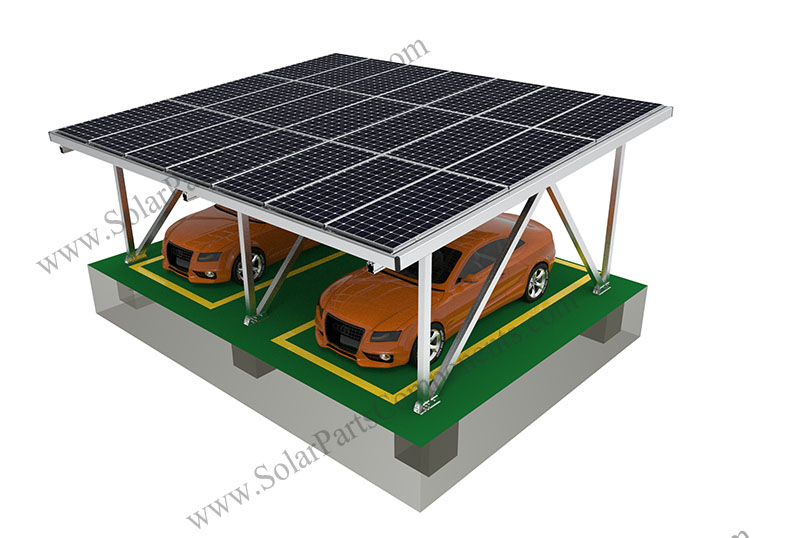Technology Principle
Solar carports integrate photovoltaic (PV) panels onto parking shade structures. Sunlight is converted into electricity via silicon or thin-film cells. Key innovations include:
Active cooling systems (e.g., fans + water misting) to boost efficiency by 15–20% (panel output drops 0.5%/°C temperature rise).
Smart energy management linking PV arrays, batteries, and EV chargers for “solar-storage-charging” synergy.
Key Advantages
1. Dual-Function Design:
Generates clean energy (e.g., 20m² carport → 3,000 kWh/year).
Provides vehicle shade, reducing cabin temps by 5–8°C.
2. Economic Returns:
Commercial: 100m² system (~¥220,000 investment) pays back in 2–3 years via power sales/EV charging fees.
Residential: 20m² unit (¥4,000–8,000) cuts household electricity costs by 20–30%.
3. Grid Resilience:
Supports V2G (vehicle-to-grid) tech for off-grid power during outages.
Cost-Benefit Analysis
| System Type | Cost Range | Payback Period |
|————————|——————–|——————–|
| Basic (structure only)| ¥200–400/m² | 6–7 years (home) |
| Enhanced (with cooling/EV chargers) | ¥500–1,500/m² | 2–3 years (commercial) |
Critical Implementation Tips
1. Regulatory Compliance: Secure construction permits; opt for “self-use + grid sell” policy.
2. Site Optimization:
Tilt panels at 15°–30° for max sun exposure.
Use corrosion-resistant steel frames (wind resistance > Level 12).
3. Maintenance: Clean panels quarterly (15% output gain); inspect electrical systems annually.
Real-World Application
Corporate: GoodWe’s demo project (13.6kW PV + 6 EV chargers) powers employee vehicles.
Public: Modular wave-design carports (e.g., 30m × 2.5m) earn ~¥100,000/year.
> In summary: Solar carports merge parking utility with renewable energy generation, offering rapid ROI for businesses and sustainable savings for homes. Prioritize active cooling and local regulations when deploying.








